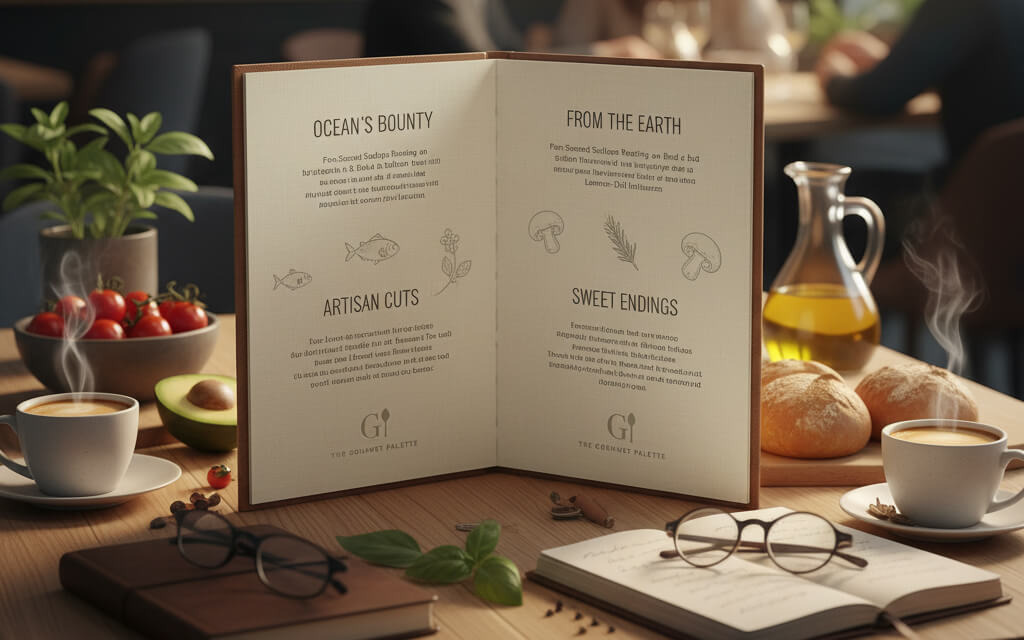October 08, 2025

In today’s competitive dining landscape, a menu isn’t just a list of items—it’s a strategic narrative device. Every word, layout choice, and dish description contributes to how diners perceive your brand, your values, and your culinary vision. In a world where diners crave authenticity, experiences, and connection, story-driven menus help restaurants stand out, influence choices, and foster lasting loyalty.
Whether you’re a fine-dining bistro, a plant-based café, or a fast-casual kitchen, storytelling can transform your menu into one of your most powerful marketing assets.
People don’t just buy food—they buy into a feeling, a memory, or an identity. According to consumer behavior studies, diners are more likely to choose high-margin or signature items when they feel emotionally connected to a dish. That connection often starts with the story.
A story-driven menu:
Related read: Using Customer Data to Make Smarter Menu Decisions
External insight: How Neuroscience Explains the Power of Storytelling
The magic isn’t just in the wording—it’s in how every element works together to tell a cohesive story.
Instead of generic titles like “Starters” or “Entrees,” use themed or branded sections that reflect your culinary voice.
These titles set expectations, ignite curiosity, and provide subtle cues about your restaurant’s style and values.
Go beyond listing components. Describe origins, inspiration, and craftsmanship behind each dish.
Instead of: “Grilled salmon with lemon butter sauce and asparagus”
Try: “Sustainably caught Atlantic salmon, char-grilled and finished with a lemon-thyme butter, served with tender asparagus from our local farm partner in Vermont.”
Why it works:
Want better descriptions? Crafting Better Menu Descriptions With Sensory Language
A well-placed photo or illustration can do more than show what a dish looks like—it can evoke a feeling. Whether you use stylized dish photography or lifestyle shots of your chef plating meals, the goal is to visually support your story.
Learn the science behind visuals: The Science of Food Photography for Restaurant Websites
External tip: Restaurant Menu Design Tips With Visual Psychology
Menus that reflect the seasons show diners you value freshness, sustainability, and local partnerships. These stories not only support your brand’s environmental or community values—they also create urgency for diners to try limited-time dishes.
Example:
Your brand story isn’t just what you tell customers—it’s what they experience across every touchpoint, especially your menu.
These small choices create consistency and ensure that your brand voice flows from your menu to your website to your social media.
Build a cohesive digital identity: Restaurant Branding 101
External read: The Art of Brand Storytelling in Hospitality
To make your menu a compelling narrative—not just a well-worded list—follow these best practices:
Pro tip: Integrating Your POS with Website helps track which items convert both online and in-store.
The narrative shouldn’t end with the printed menu. Reinforce it across digital platforms:
Start with these digital strategies: Should Restaurants Run Google Ads?
External reference: Storytelling in Social Media Marketing
A dish that’s delicious will bring a customer once—but a dish with a story builds a relationship. In an industry where experience matters as much as taste, your menu is a canvas for creativity, culture, and connection.
By investing time in storytelling—through words, visuals, and thoughtful layout—you can:
Stay up to date with the latest tips, expert insights, product reviews, and step-by-step guides to help you grow, create, and succeed—no matter your industry or passion.